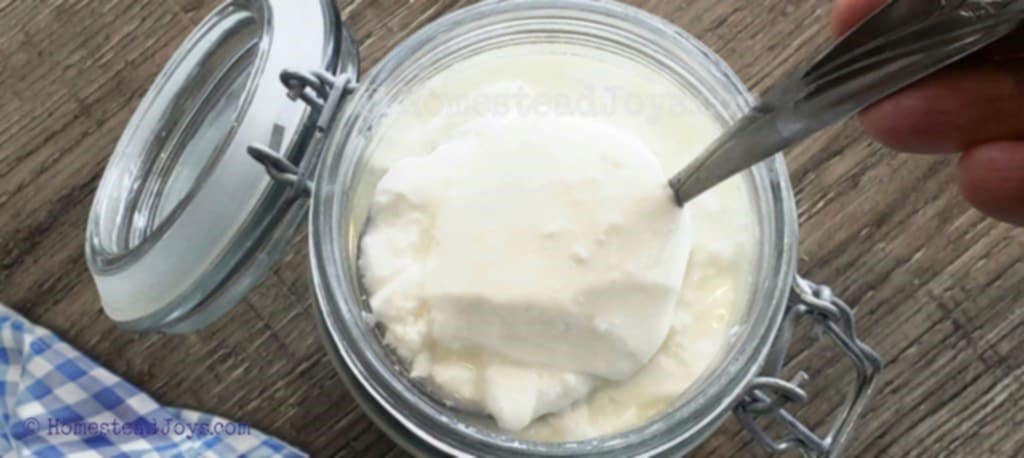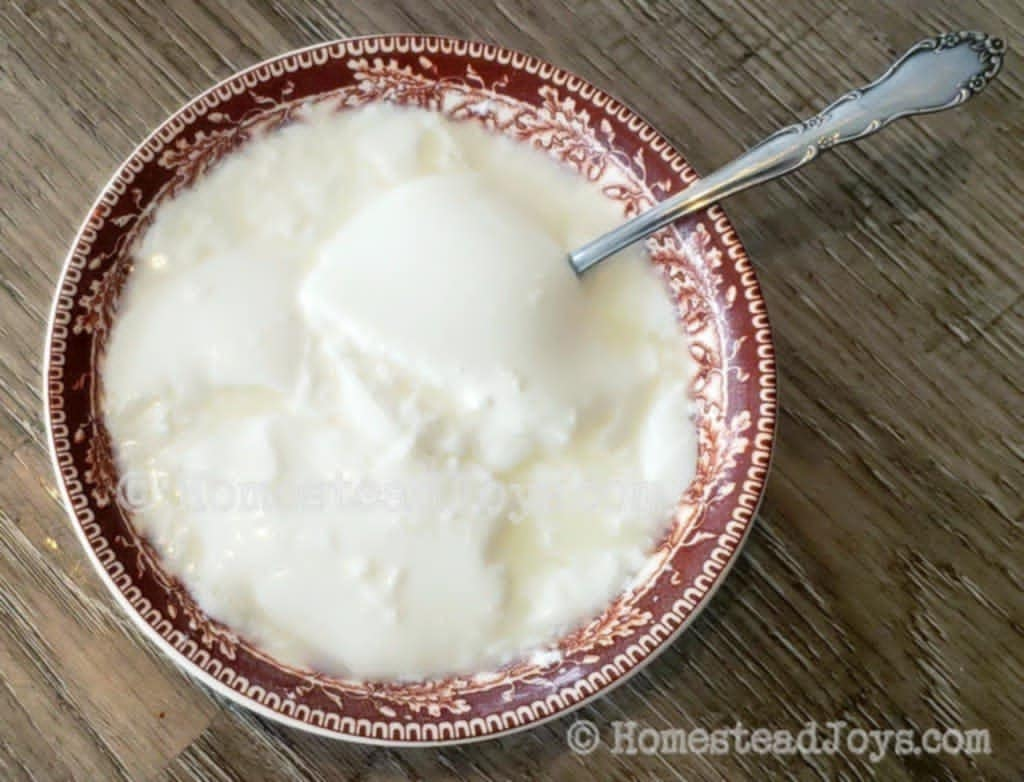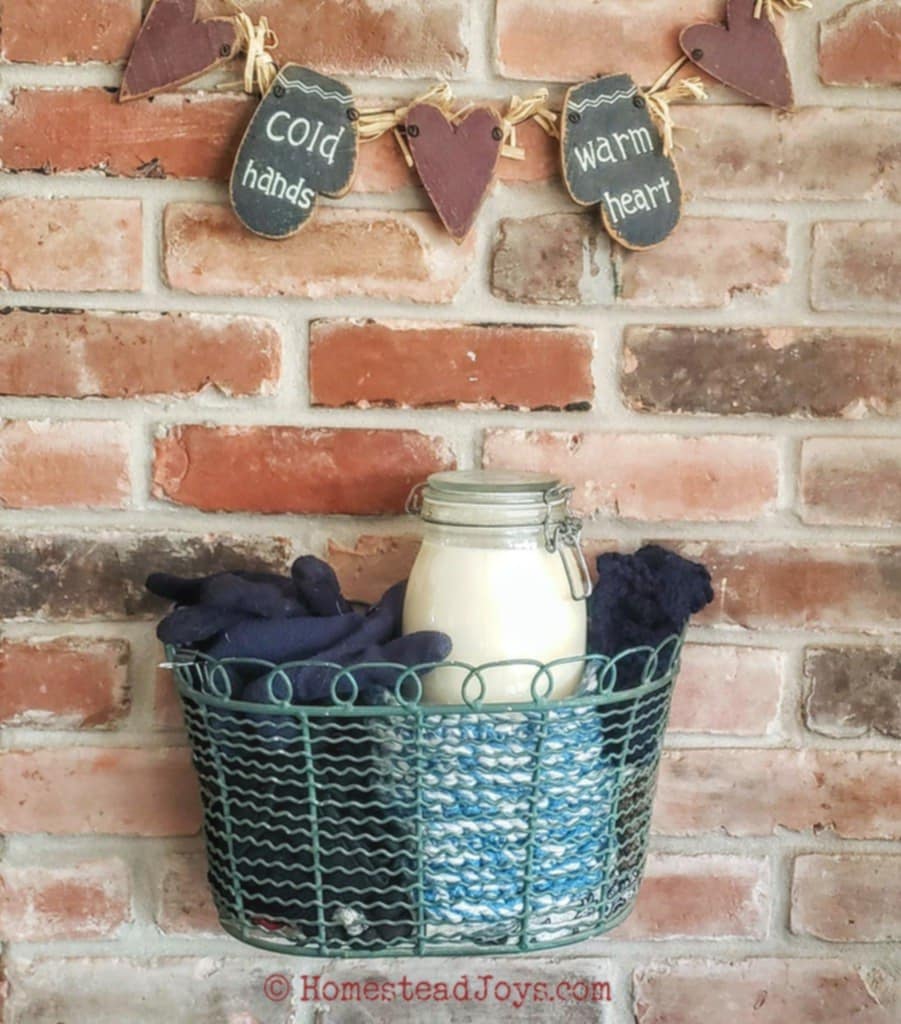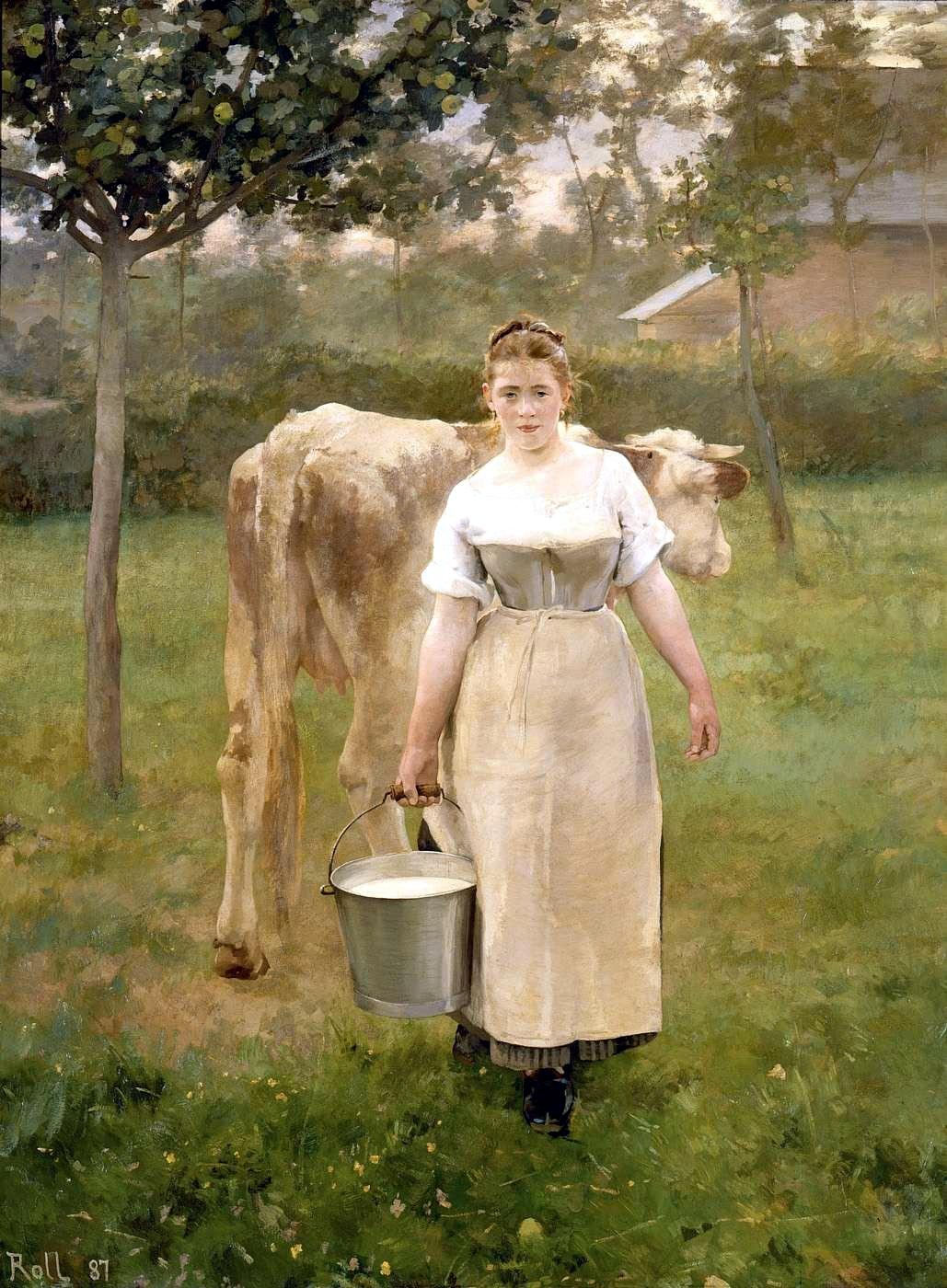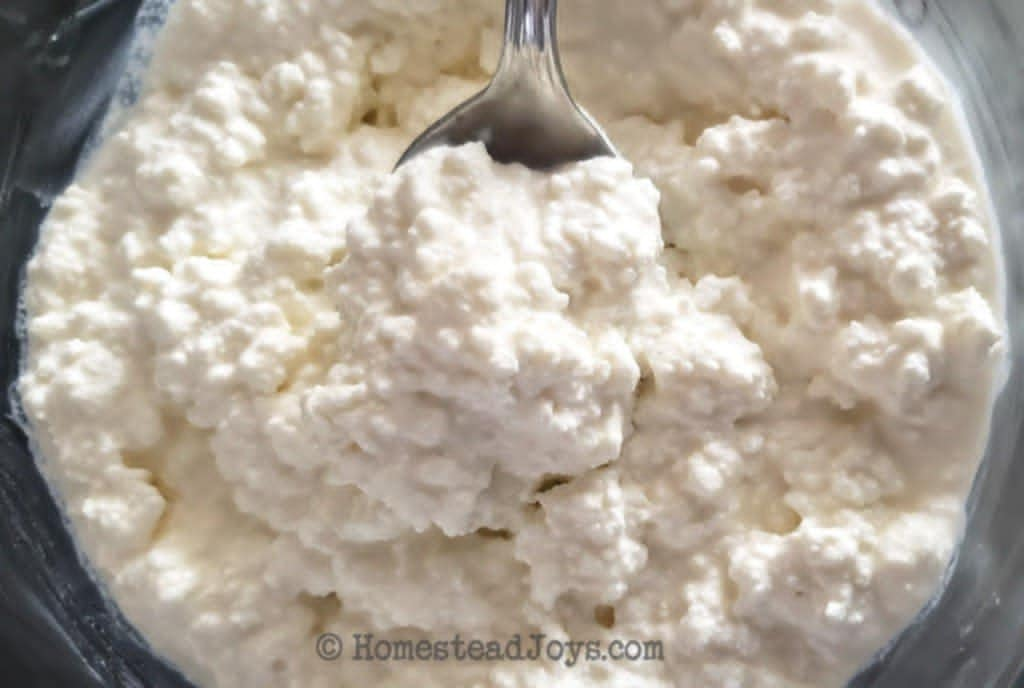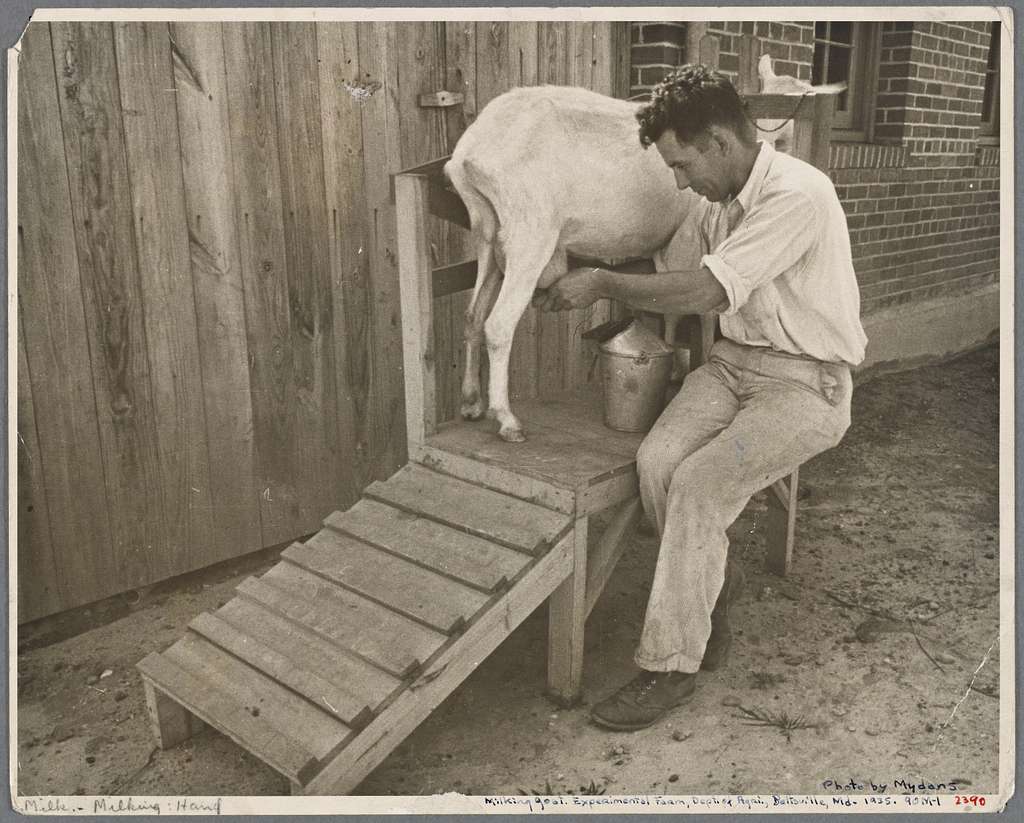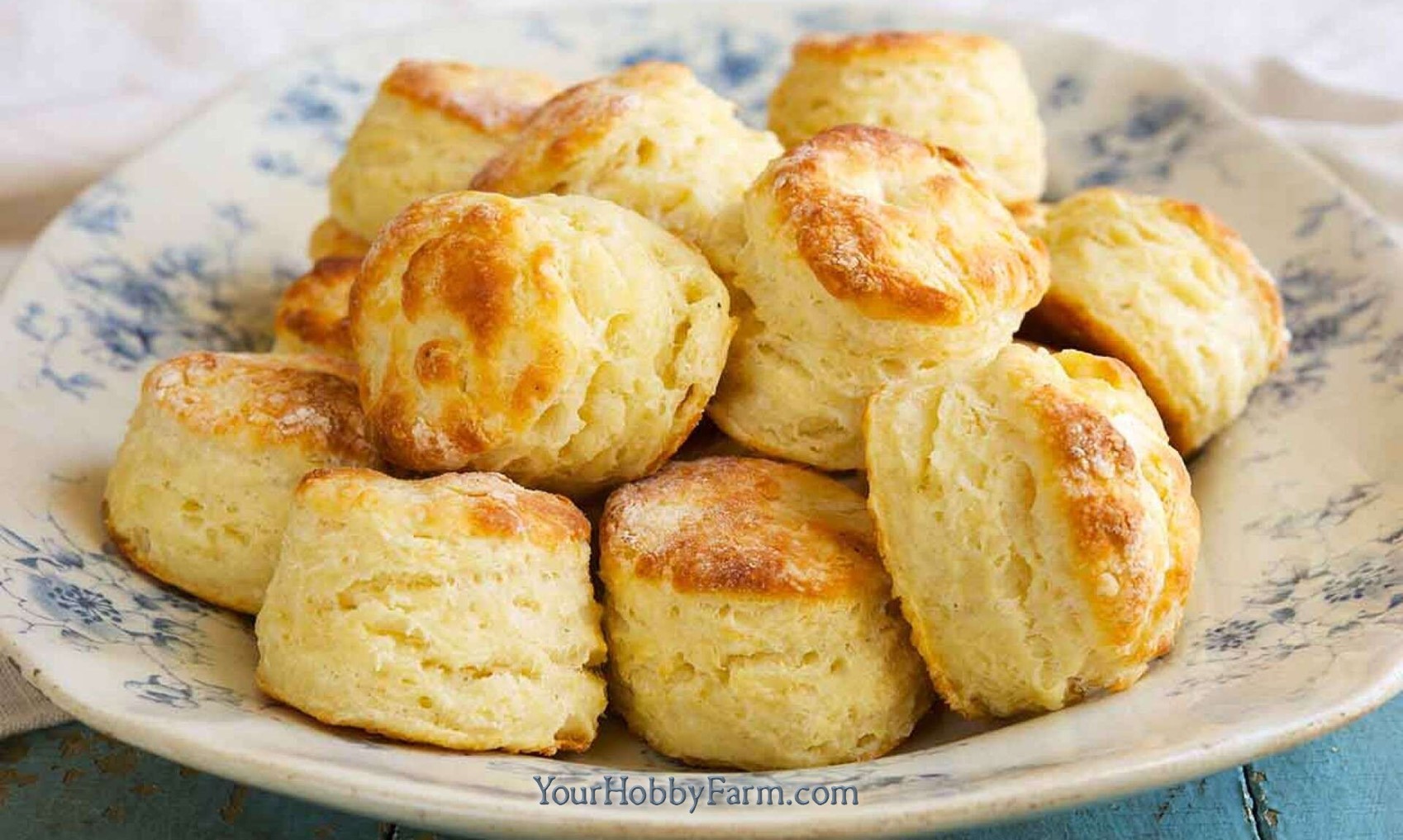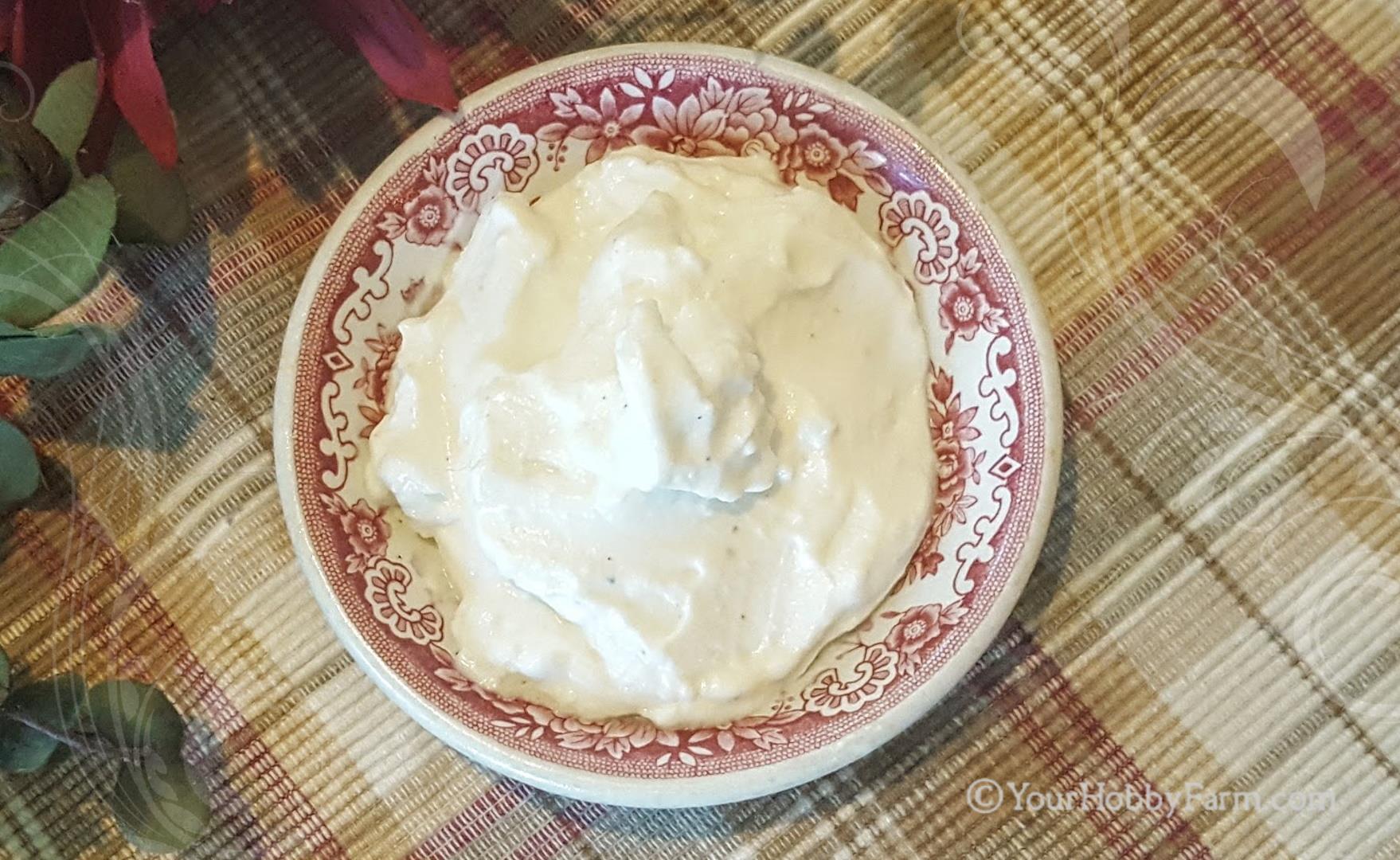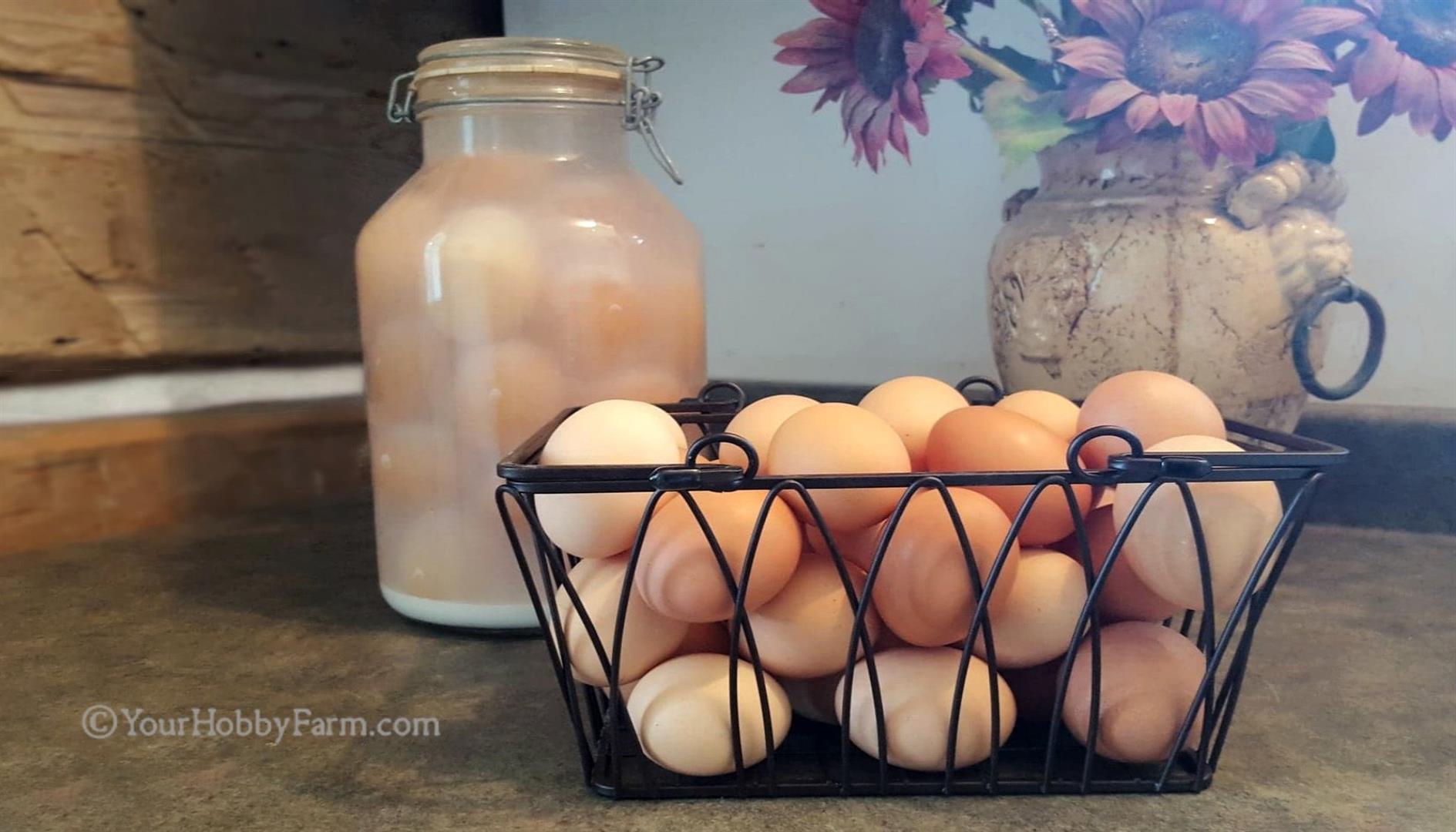The Art of Making Clabbered Milk
Years ago, a jar of raw clabbered milk fermenting near the kitchen stove was a common sight. This nutritious staple food was also a necessary ingredient for other frequently made foods. It’s amazing how something so common several decades ago is almost unheard of today! Renewing the art of clabber-making brings back a nearly lost, centuries-old skill: the simplest form of natural dairy fermentation.
It's not surprising that clabbered milk is experiencing a resurgence, particularly among those interested in traditional food practices like cheesemaking! It offers a unique, highly nutritious, probiotic-rich alternative to pasteurized milk products.
What Is Clabbered Milk?
What Is clabbered milk? Known by several names, this nutritious raw dairy ferment is also called Bonny Clabber, Clabber Milk, or simply, Clabber. Some call it Sour Milk; however, we hesitate to classify it as such because of the implication of sharp, distasteful flavors.
This ancient dairy food was, and still is, made by allowing fresh raw milk to ferment without heat and naturally thicken. Natural fermentation utilizes innately occurring healthy bacteria present in the raw milk which enable the fermentation under proper conditions. This process also retains the many natural enzymes, probiotics, antibodies, vitamins, minerals, etc. which are present in raw milk.
Clabbered milk is made of raw milk from various dairy animals. It's a "wild fermentation" meaning you don't inoculate the milk, as it's self-inoculated. The transformation occurs when Mesophilic Lactic Bacteria, innately in raw milk, ferment lactose (milk sugar). The lactose ferment produces lactic acid, which in turn "clabbers", or coagulates, the milk, turning it into a very soft curd and whey which easily separates when strained.
Clabber is almost indistinguishable from yogurt in consistency and flavor. Yogurt with heated milk, utilizesThermophilic Lactic Bacteria, also inherently present in the milk. Both have a slightly tangy flavor with just a hint of creamy sweetness. They are similar to other fermented milk foods like milk kefir, and cultured buttermilk.
Why is clabber nearly unknown today? The main reason is that, as a society, we've been dependent on pasteurized, store-bought dairy products. Instead of properly fermenting, pasteurized milk just turns nasty. Most of the bioavailable nutrients, beneficial enzymes, and mesophilic bacteria present in raw milk are all killed during pasteurization.
What Does Clabber Taste Like?
If you enjoy homemade yogurt, then you'll love clabber! It offers a gentle tang, slightly nutty, with just a hint of sweetness.
However, if you prefer more tartness, all you need to do is ferment it longer at room temperature. Fermenting too long has led some to describe clabber as having a much stronger flavor than yogurt. The length of fermentation is a way you can control your tang level.
We prefer the milder flavored clabber, but the choice is yours!
Is Clabbered Milk Good for You?
Yes, clabber is very good for you!
Because the only ingredient is fresh raw milk, and since no heat is involved, clabber is a living food. It contains all the incredible health benefits naturally found in milk, and more.
Low temperature fermentation ensures that clabbered milk is also rich in probiotics and packed with nutrients that promote gut health and boost the immune system.
How to Make Clabbered Milk
Wondering how to make clabbered milk? As long as you have a source of raw milk, it's unbelievably easy to make, no recipe is needed!
Clabber has literally only one ingredient: Fresh Raw Milk!
You'll need:
• A sterile, lidded jar - If this is your first attempt, it's best to start with a half-pint jar.
• A "wet erase marker" to record date on the jar (optional)
Place your raw milk in a sterile covered jar. Leave it undisturbed at room temperature, ensuring the milk is kept around 70-80°F or 21-27°C for optimal fermentation.
This allows the healthy, naturally occurring Mesophilic Lactic Acid Bacteria to ferment the lactose (milk sugar) into lactic acid. This, in turn, causes the milk to coagulate and healthy probiotics to populate, resulting in a tangy in flavor.
Warm spots in cold climates may include the top of the fridge, near a heater or woodstove, or on a fermentation heating pad or seedling heat mat.
This fermentation process can take anywhere from 12 hours to a few days, depending on the ambient temperature and the age and quality of the milk.
After 12 hours, you can check on its consistency and smell. Very gently give your jar a little shake. It should be congealed and with a jelly-like jiggle.
What should clabber smell like? Your clabbered milk should have no distasteful sour odor, but a pleasant, almost nutty aroma with just a hint of sweetness, a bit like cheesy, buttery cream.
If your clabber smells "off" or strongly unpleasant, just start over again with a clean jar and fresh milk. No need to waste this, your dogs, cats, chickens, or pigs will enjoy it. But if it starts to bubble, this is an indication that your clabber has become contaminated. Just throw it out and start a new batch. It's best not even to give it to the animals.
If it smells pleasant, give it a taste! It should taste like lovely mild yogurt. Enjoy, but don't eat it all!
You have just discovered another of the myriad of homestead joys!
Incorporating Clabber-Making into Your Homestead Schedule
Now that you know how to make clabbered milk, and are using it to make other foods, how do you add clabber-making into your already busy homestead schedule?
Once your clabber culture has been established, here's what we do to keep the generational flow of clabber going:
- Before going out to milk, we take the prior day's clabber out of the fridge. Scoop out a couple heaping tablespoons into a quart jar on the countertop ready for the next step. Suggested: a 1:50 ratio, clabber starter to fresh milk, but we don't measure it.
- We go out and milk the cow (insert: your dairy animal).
- After milking, we bring the milk into the house and strain it. Then, we immediately fill our quart clabber jar with fresh, udderly-warm milk, and mix well. Put the lid on, and mark the date. The rest of the strained milk goes into the fridge.
- Set the clabber culture on counter until bedtime (or about 8 - 12 hours). By then it's usually perfectly clabbered.
- Pause the culture progression by refrigerating. It's ready to use for the next morning’s batch of clabber.
- If you have any jars of clabber discard1 still in the fridge, they will be useful for many other recipes. It's good for at least a week - if it lasts that long.
Now, If You've Made Some Lovely Clabbered Milk,
What to Do Next?
First of all, you'll want to make a new batch! Maintaining clabber is similar to keeping a sourdough starter. A clabber culture is generational, each new batch being inoculated with the one before it.
From now on, depending on the ambient temp and the temperature of the milk, your clabber should be ready in 8 to 24 hours. If you take care of your clabber, it will take care of you! Simply repeat this, as Buz Lightyear would say, "To infinity and beyond"...
But that's not all; there's more!
Ways to Use Clabbered Milk
Besides enjoying freshly made clabber as you would yogurt, it can also be used in many other ways!
Some clabber cheeses are extremely easy to make, such as Raw Cottage Cheese, or smooth spreadable cheeses, like Cream Cheese and Quark.
Other cheeses require more time and labor, but it's well worth it. For these, we use clabber instead of purchasing commercially freeze-dried mesophilic or thermophilic bacteria, which are necessary for cheese making.
Here at the homestead, one of our joys is making Cheese Curds (aka: Squeaky Cheese), as well as pressed Cheddar Cheese, Ricotta, and other cheeses.
Here are just a few of many other ways to use clabbered milk:
- Clabber can be used as a starter culture for making other fermented foods, like sauerkraut or sourdough starters.
- You can incorporate clabber into healthy smoothies, puddings, or even as a base for homemade yogurt.
- Whisk your clabber until it's smooth and drink it like cultured buttermilk.
- Add it to your baking, like Biscuits, pancakes, etc. for extra goodness!
- And if you have too much, your chickens, cats, dogs, and pigs will love it!
- Or you can dilute it with water, and add to your garden...
The list goes on... If you make clabber, what are your favorite ways to use it?
How to Store Clabbered Milk
Once your clabber has fermented with "tang" to your liking, keep it in the refrigerator. This will both slow the progression of tanginess, and it will thicken it as well. Clabber can be kept in the refrigerator for a week or two, just as you would keep yogurt.
You can freeze clabber in ice cube trays, then place the frozen clabber cubes in an airtight container. Frozen. it will be good for several months.
Can I Clabber Milk from Any Dairy Animal?
Yes! In North America, clabbered milk tends to be made with cow's milk, but it is certainly made with other types of fresh raw milk as well! The resulting milk fermented not only provides the many health benefits innate in raw goat or sheep milk, but it is rich in probiotics as well.
Personally, we've only made clabber with our cow's milk, but we've read that the process of goat milk clabber is basically the same. Missy, at Irish Acres Homestead, shares how she does it with milk from her goats.
Sheep milk is another good milk to clabber, and it's also better for you than cow milk. Research published by the University of Auckland-based Liggins Institute in 2019 showed that sheep milk is easier to digest than cow milk, and is denser in certain nutrients, especially healthy fats like branched-chain amino acids and conjugated linoleic acid.
Where does the raw milk on your farm come from? The presence and importance of different types of milk-giving animals vary significantly among regions and countries around the world. The milk of each species varies in taste, yield, and each of these species provides unique nutritional benefits. You can discover more about this on our Fresh Raw Milk page.
Clabber Milk History and Renaissance
Humans have been consuming raw milk for thousands of years. Interestingly, vessel artifacts from the earliest civilizations were found to have contained milk residue. Clearly, ancient civilizations consumed milk products like clabbered milk, butter, yogurt, and cheese, suggesting an early understanding of milk fermentation and preservation.
The Bible's mention of the "land of milk and honey", symbolizing a land of abundant provision, may have included the reference to clabbered milk, yogurt, and cheese, as early herdsmen lacked refrigeration.
Today, clabber, or other forms of soured milk, is still popular around the world. In Ukraine, a similar product is used to enrich pancake batter or borscht. Dahi is an Indian variation that requires heating and results in a thicker curd; often enriching both savory curries and sweet curd pudding known as dahi ka halwa. Nunu is beloved in West African countries including Ghana, Nigeria, and Burkina Faso, and may be the most similar to clabbered milk, seeing as it's spontaneously fermented and made with cow's milk. Source
Our ancestors, generations before us, continually made and ate cultured foods. Their daily diets included clabbered milk, the making and value of which is being rediscovered today.

Footnotes:
1. Clabber "discard": Excess clabber after inoculating your new batch. You won't ferment it further, but will keep it refrigerated to use it in other ways.
Translate This Page!
Traduire Cette Page!
¡Traduzca Esta Pagina!




Piping Rock©
Bringing you the highest quality In hundreds of health care and life-enhancing natural products at the
lowest cost to you!
high reviews, crazy deals,
happy, healthy customers!
Click here and save today!
Business Appreciation
* This website is not affiliated with
Piping Rock

Supporting our local feed mills
Meunerie Alexandria Milling
613-525-1973
Great Products • Great Prices
Great Service
Click the pic for their
facebook page!
Meunerie Alexandria Milling
Established in 1962 by The Massie Family
Email: Alexandriamilling@hotmail.Ca
475 Massie Crescent
Alexandria, Ontario, Canada
~~~
Small Business Appreciation
* This website is not affiliated with
Meunerie Alexandria Milling

